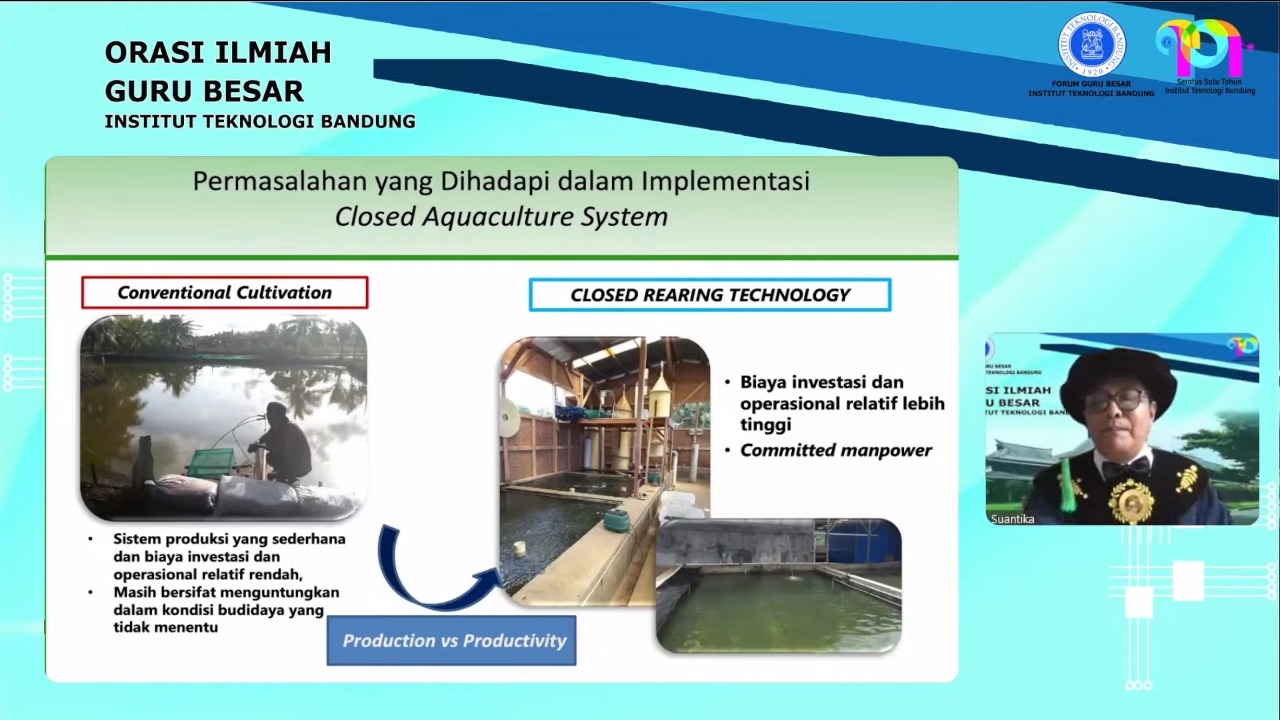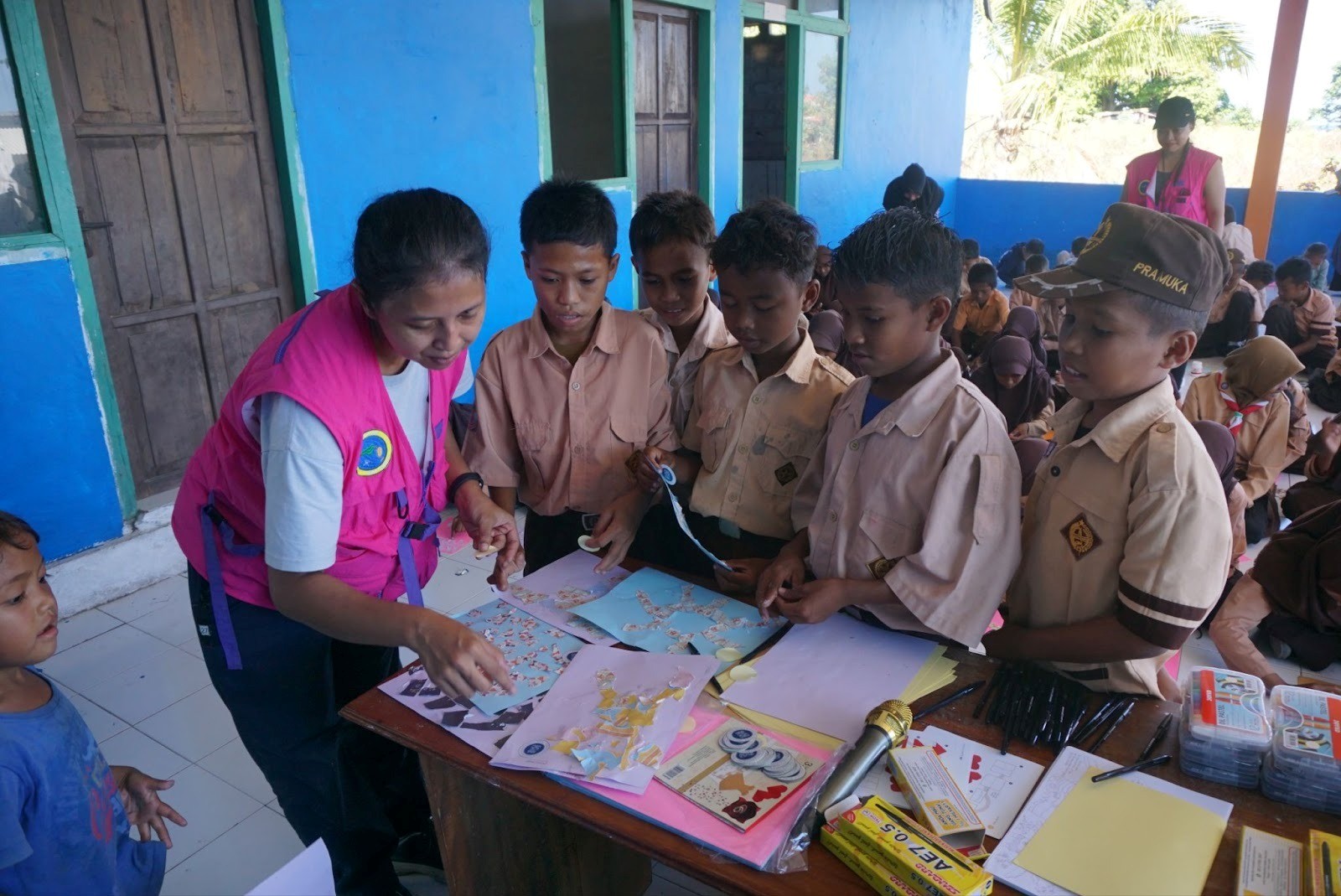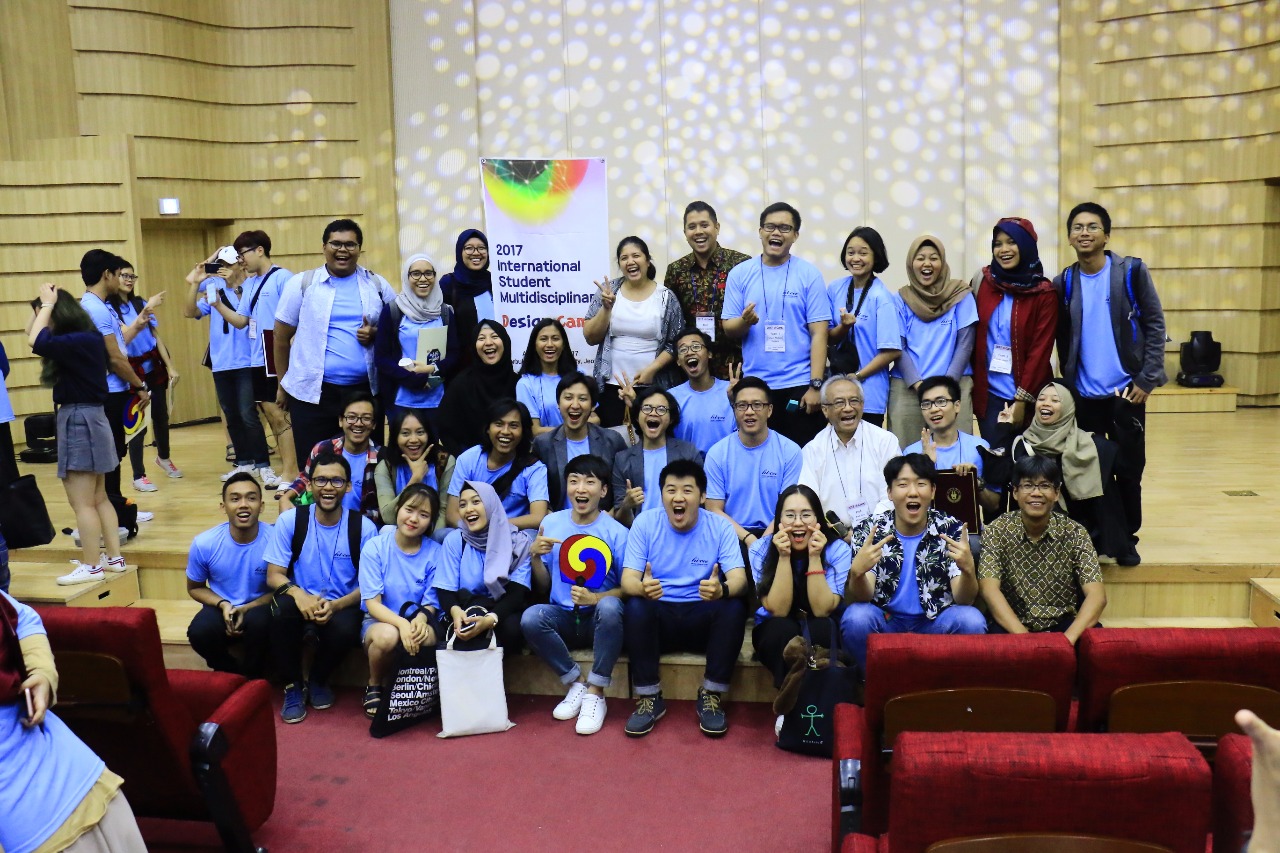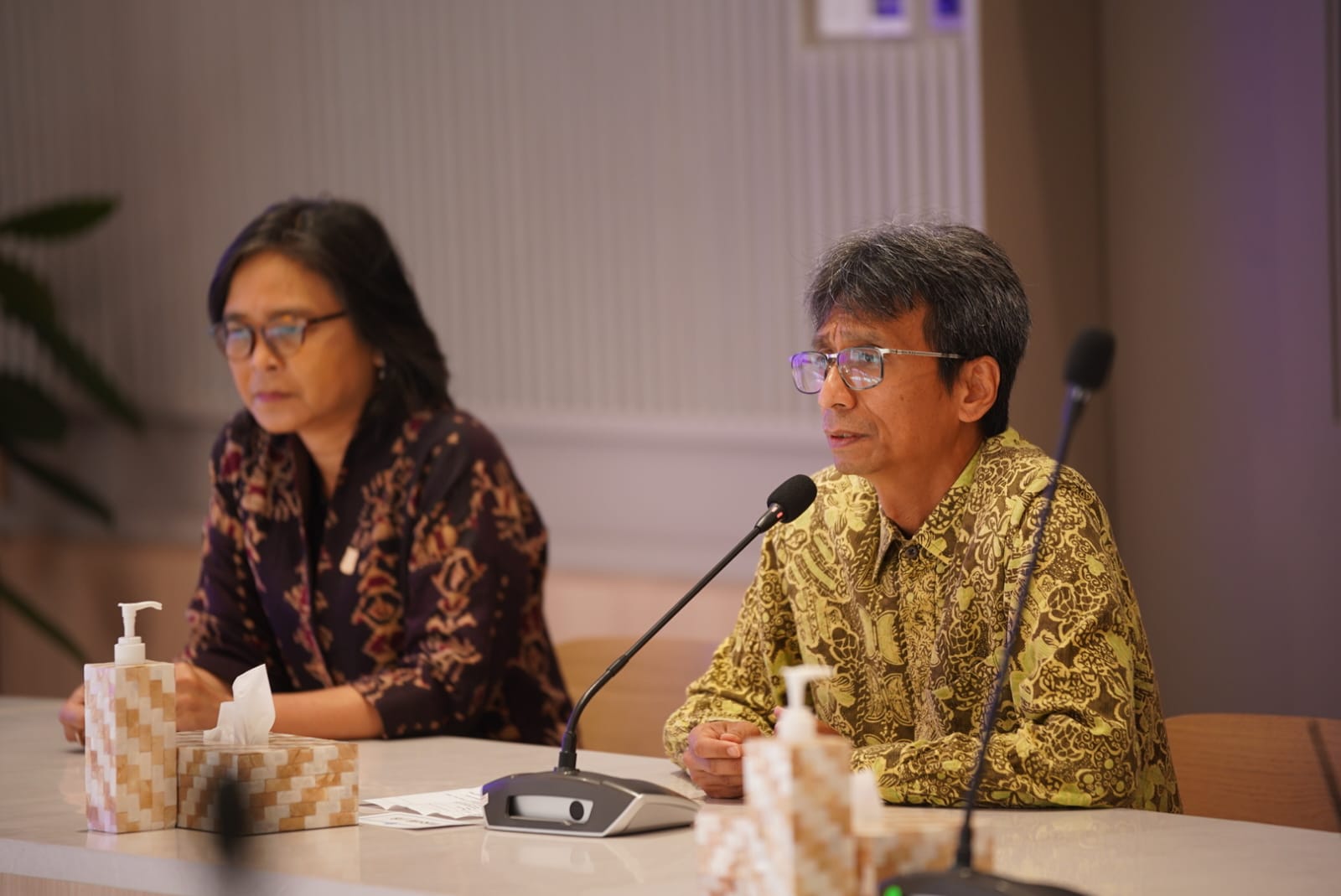Prof. Gede’s Scientific Oration Regarding Closed Aquaculture System for the Future of Indonesia’s Food Industry
By Adi Permana
Editor Adi Permana

BANDUNG, itb.ac.id—The Aquaculture Science professor from ITB SITH (School of Life Sciences and Technology), Prof. Dr. Gede Suantika, S.Si., M.Si., delivered a scientific lecture about the "Development and Application of Closed Aquaculture System for Sustainable Aquaculture Industry". The oration was held at the ITB Professor Forum via the ITB Youtube channel (Saturday, 11/12/2021).
Prof. Gede recounted his initial interest in aquaculture during his biology studies in ITB bachelor and masters programs. He was asked to analyze freshwater ecology in Situ Panjalu, Ciamis and the shrimp farms in Eretan, Indramayu. However, his passion for the study delved deeper during his doctorate years at Ghent University. "I began to work with RAS technology to mass-produce natural feeds. I also learned the basic principles of biological and physical engineering in aquaculture systems," he reminisced.
When Prof. Gede returned to Indonesia, he visited aquaculture cultivation centers owned by his colleagues across the country. This opportunity opened his eyes to Indonesia’s large potential in fishery cultivation due to its tropical climate and having the second-longest coastline in the world. In terms of its sociocultural aspect, it possesses a high economic value in culture cultivation for various fishery commodities. Therefore, it is not surprising that Indonesia is currently one of the top five global aquaculture producers.
Referring to the global map statistics, the production and efficiency of the aquaculture sector are constantly advancing with high nutrition quality. "I believe aquaculture can provide seafood for more than 2 million people by 2050," Prof. Gede claimed.
Despite the advantages mentioned, Prof. Gede is aware of the problems that hinder its implementation in society. He explained that most people are only familiar with traditional cultivation methods that are very dependent on surface water. Conventional ponds and dragnets cause negative impacts on the environment; for instance, the increasing exploitation of mangrove forests and utilization of hazardous chemicals.
These challenges encourage Prof. Gede to take several approaches and considerations in developing a closed aquaculture system. He believed that all components in the system should be feasible and locally available, including the biological agents implemented. Furthermore, social sensitivity is essential in accommodating the entire community.

"Based on research, SITH ITB seeks to devise four closed aquaculture systems using reused and processed water so that its disposal to the environment is minimal and its operations are fully controlled," Prof. Gede reasoned. The systems will be applied to both local shrimp and fish cultivation sites in various regions.
He illustrated the first system that requires only one aquaculture tank or pool- the ZWD (Zero Water Discharge). Three microbial consortiums are used in its water treatment system: heterotrophic bacteria (for ammonification), nitrification bacteria (for the conversion of toxic ammonium compounds into nitrates), and chaetoceras calcitrans microalgae (for the assimilation of nitrates, production of oxygen, and natural feedstock).
Next is the RAS (Simplified Recirculating Aquaculture System) that utilizes biofilters to reconstruct the ammonium in the water purification process before it is used for aquaculture. Although it tends to be more complicated than previous systems, Prof. Gede simplified several components to reduce the risk of technical errors and investment costs.
The third system is a hybrid system that is already implemented at the white shrimp cultivation sites in Gresik, East Java and Buleleng, Bali. This system is a combination of ZWD and RAS, in which the ZWD system first facilitates the aquaculture technology via microbial-loops balancing for 25-30 days. Then, the simplified RAS system filters out excess organic compounds and toxic nitrogen. "This system was developed to raise the performance and efficiency of both ZWD and RAS. The output is 3-4 times higher than the conventional systems," Prof. Gede continued.
Lastly, microorganisms can be applied to aquaculture via biofloc aquaculture technology. These microbes help in enhancing the system's water quality, growth, and resilience in commodity. In addition, this approach can regulate the C/N ratio by adding organic carbon compounds.
Prof. Gede stated that his team will continue to conduct their research, especially on methods to improve the growth and resistance of fishery commodities against diseases.
Reporter: Sekar Dianwidi Bisowarno (Rekayasa Hayati, 2019)
Translator: Ruth Nathania (Teknik Lingkungan, 2019)

.jpg)
.jpg)


.jpg)


